COMMUNICATING CHANGE.
How to communicate during a transaction.
(1) Create a clear story that can be cascaded throughout the organization.
(2) Develop a detailed communications plan with a focus on the Day 1 announcement.
(3) Run frequent pulse checks to monitor employee sentiment in the first few months.
Step 1 - Create and Cascade a Clear Story
Change is hard. To manage it effectively, consider investing in three areas: 1) A Clear Story, 2) A Team of Hand-Picked Sponsors, and 3) A Realistic Plan.
Watch the below video for an overview on our change management philosophy.
This is an overview of our change management philosophy. Click the button below to download the slides.
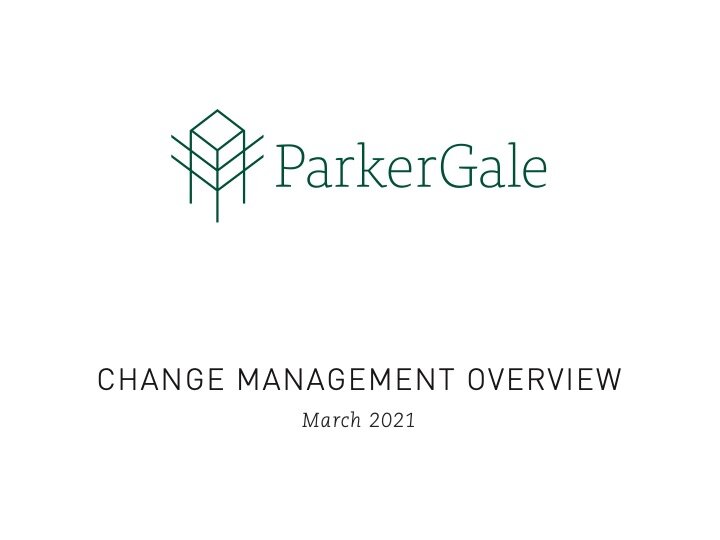
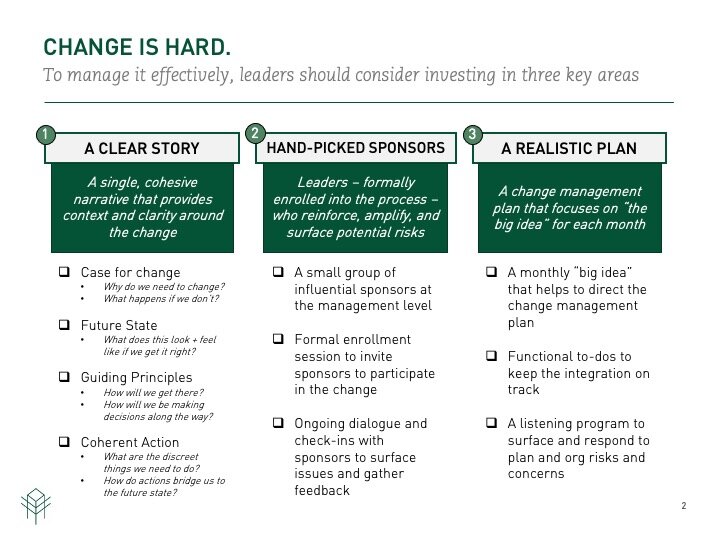
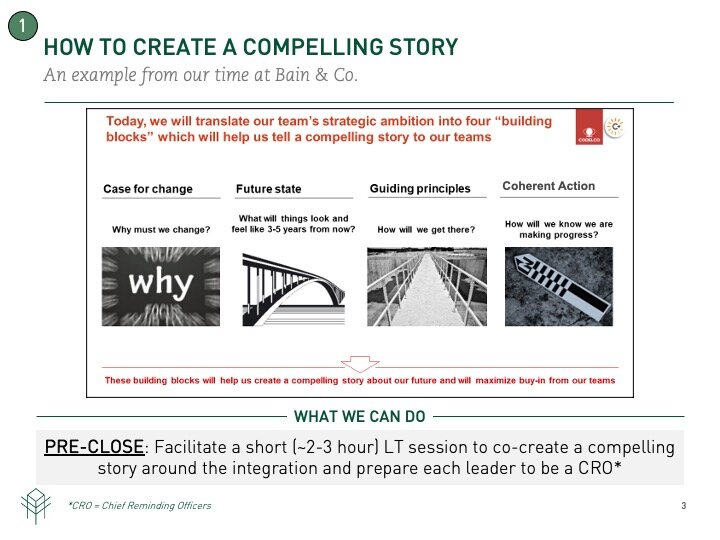
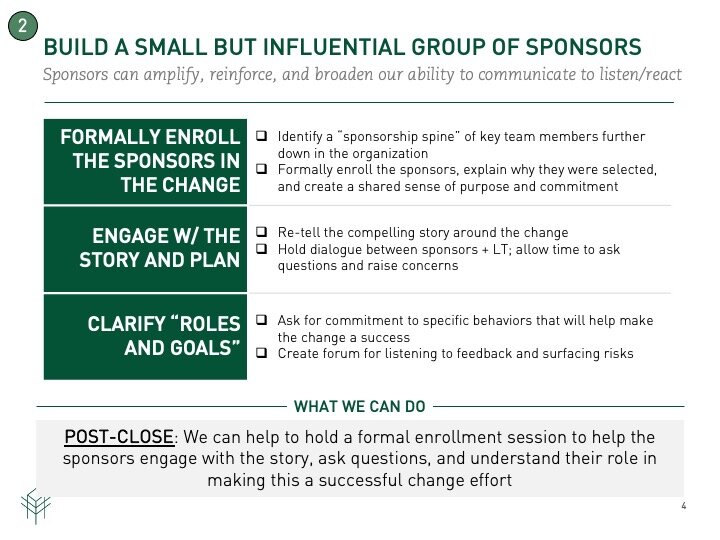
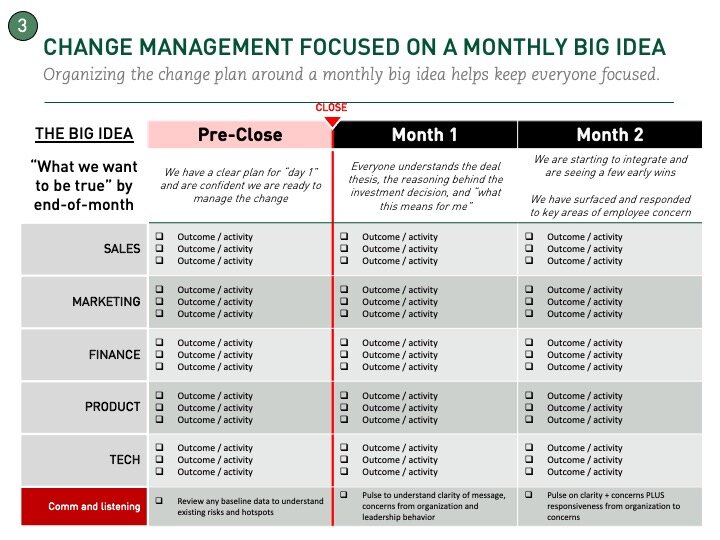
Step 2 - Develop a Communications Plan
A detailed communications plan is critical to orchestrating the first days and weeks of a transaction. We’ve developed a series of templates to get you started.
Watch this video for an overview of our communication templates before you get started.
This is an overview of our communication templates. Click the button below to download the slides.
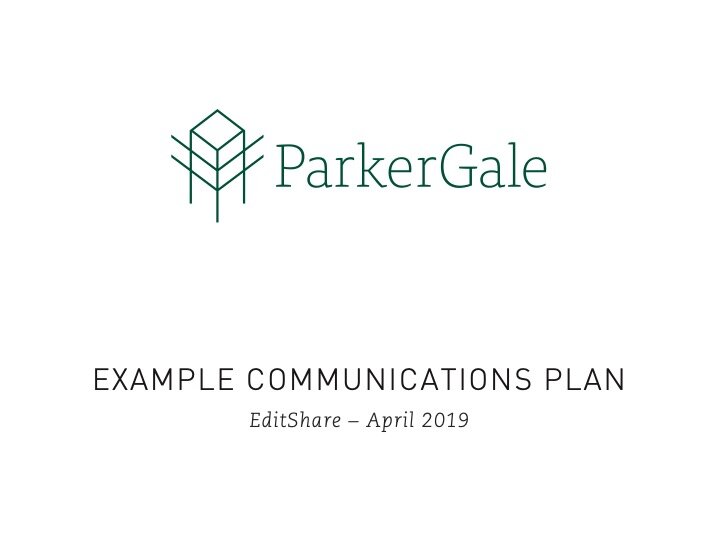




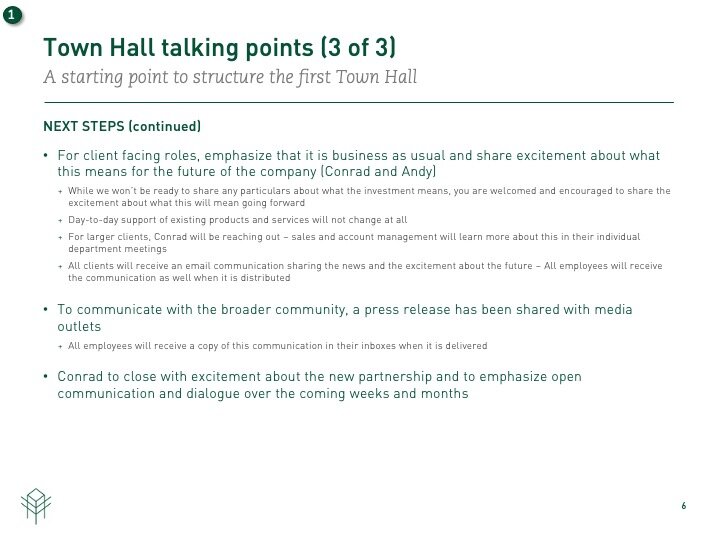
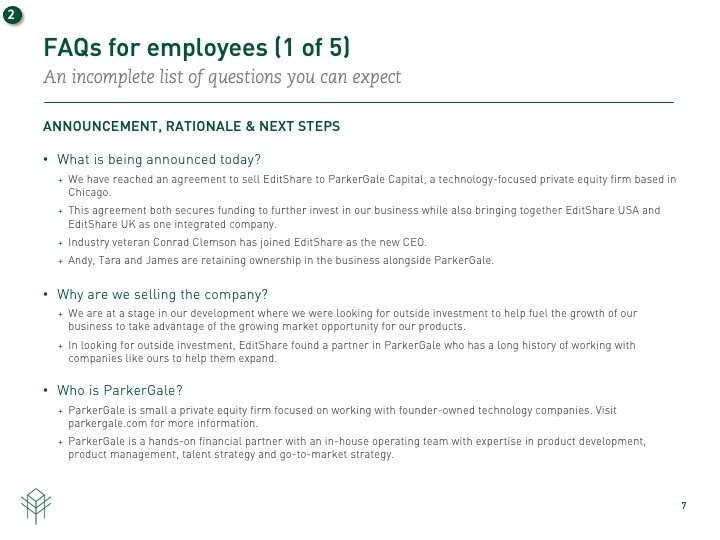
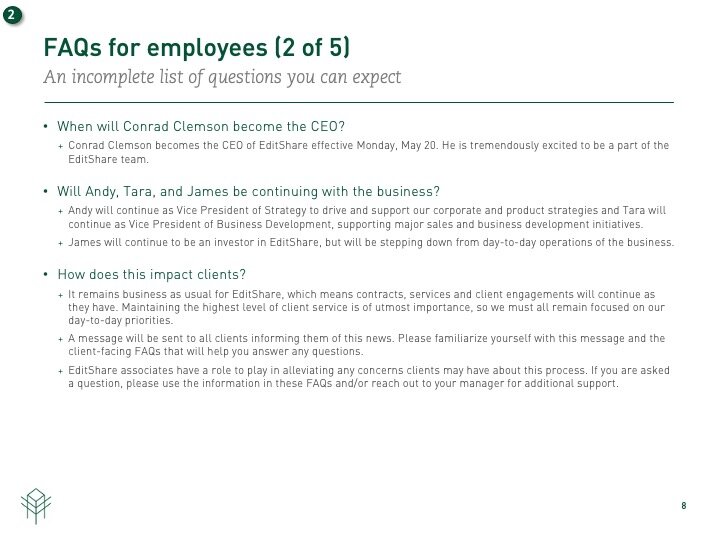
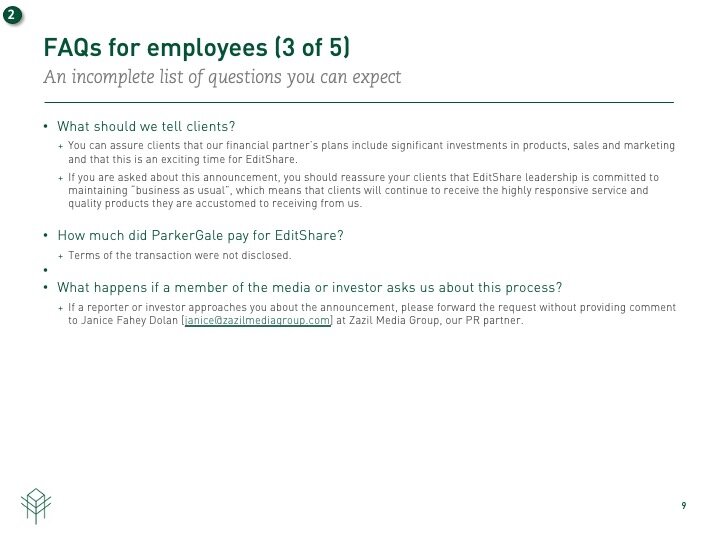
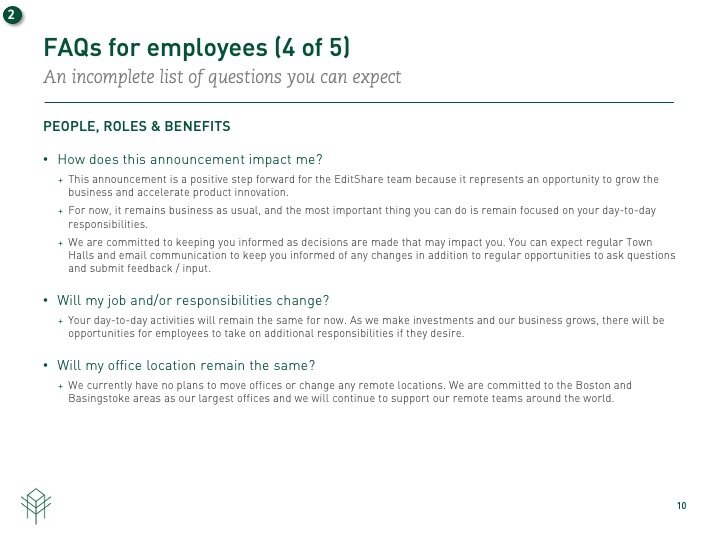
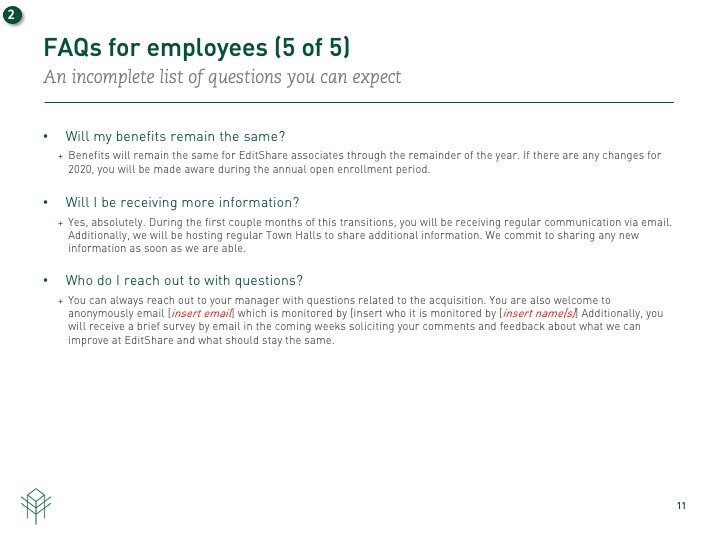
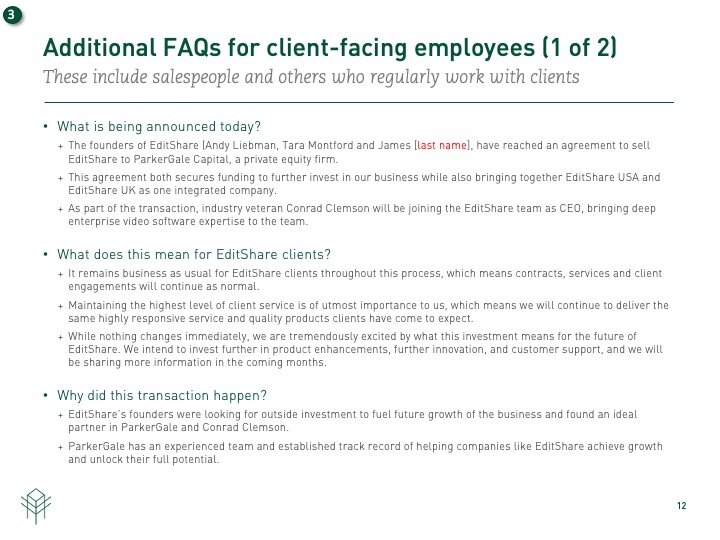
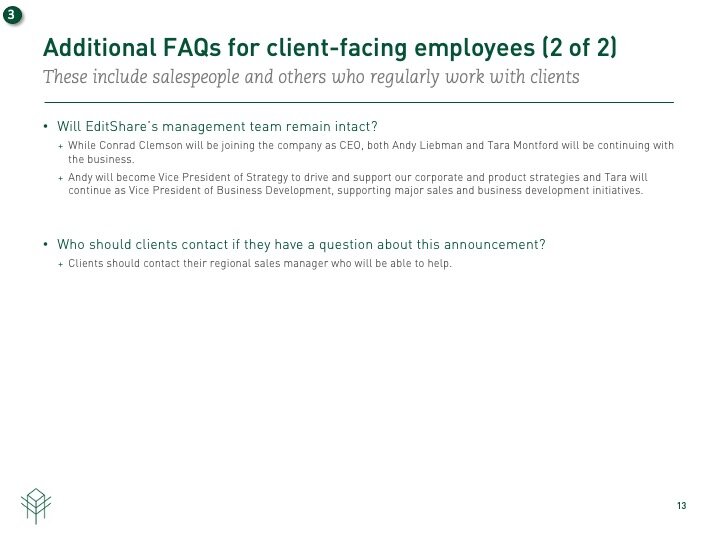
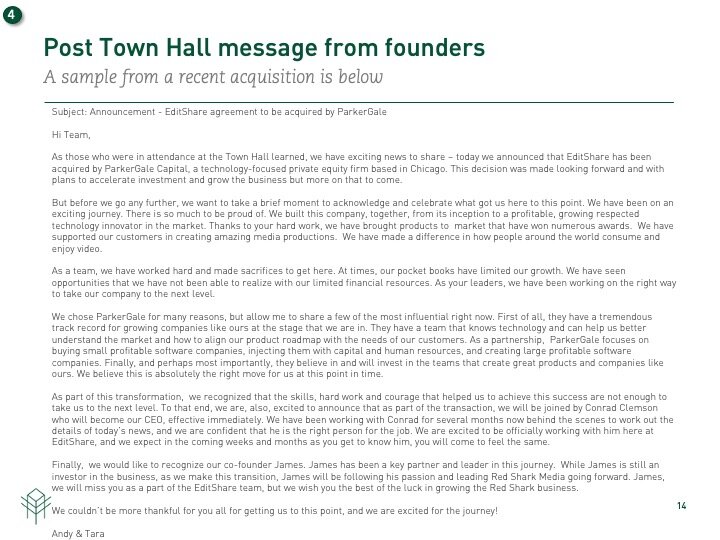
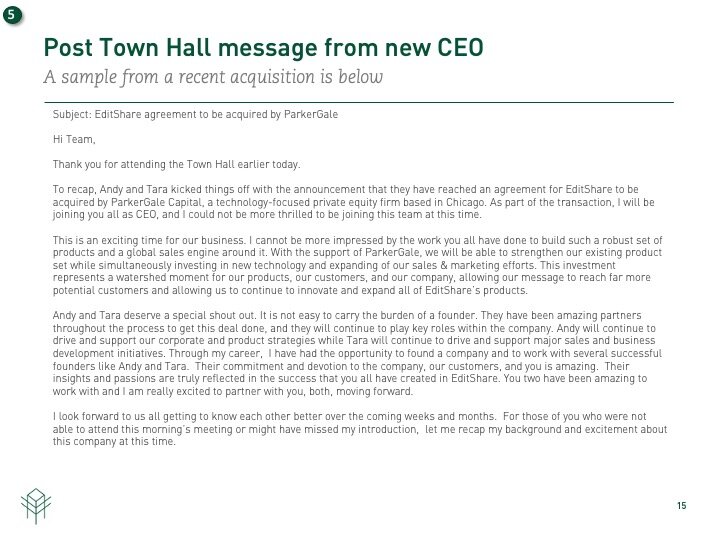
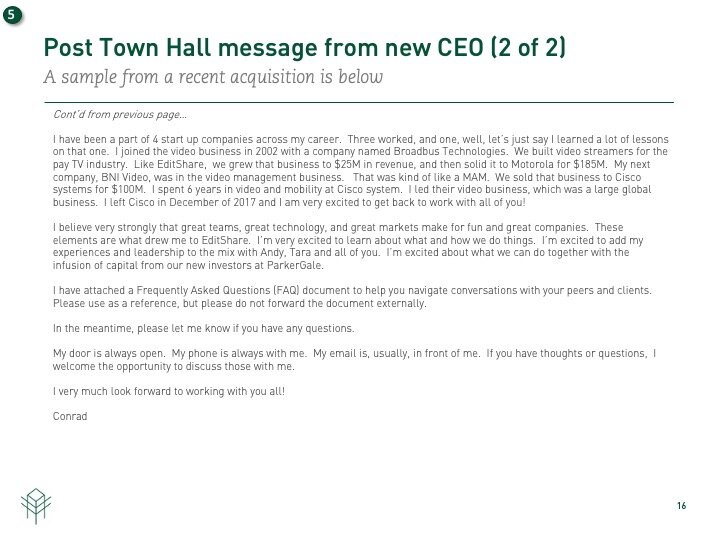
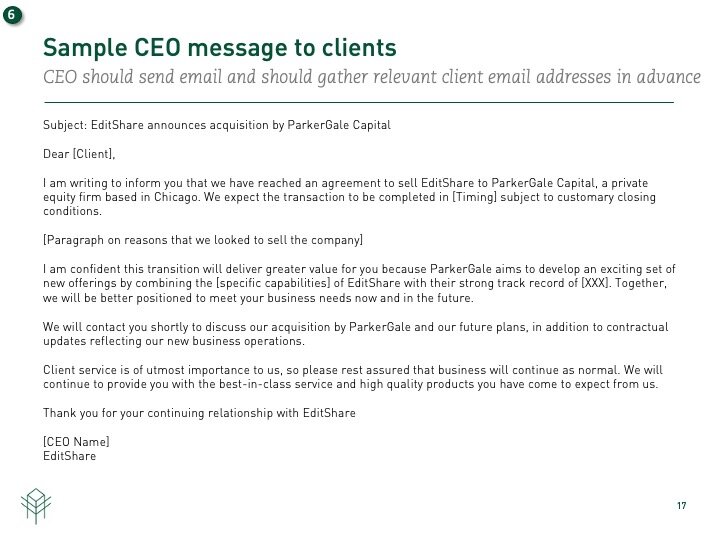
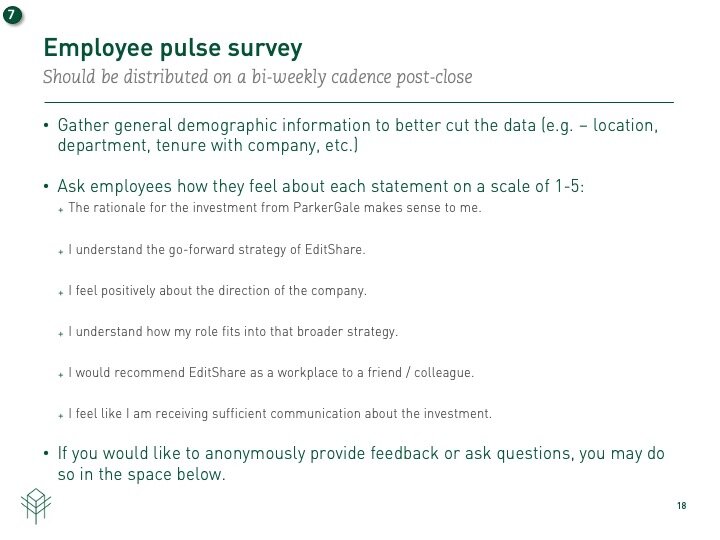
Step 3 - Run Frequent Pulse Checks
Measuring sentiment and how it changes is critical to understanding how the company is receiving the communication.
Watch the below video for an overview of how we typically administer and learn from the pulse checks.
This is an overview of how we slice and dice the survey data. Click the button below to download the slides.




What to expect when communicating a transaction.
Create a Clear Story
Develop a clear story that describes the future vision.
Select a team of hand-picked sponsors to help cascade the message.
Develop a realistic plan to achieve it.
Develop a Plan
Develop a cross-functional communications plan that includes a timeline, clear talking points, FAQs, communication to clients, etc.
Re-visit the plan throughout the first 90 days.
Pulse Frequently
Develop a set of questions to monitor company sentiment and understanding of the change.
Bonus points for adjusting a couple of questions each survey to test the “big idea” each month.
